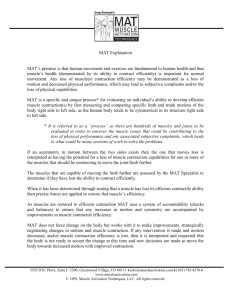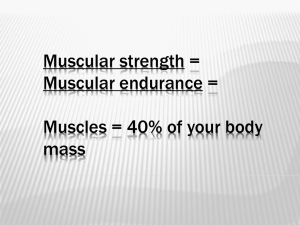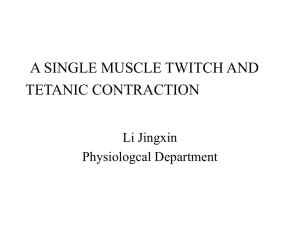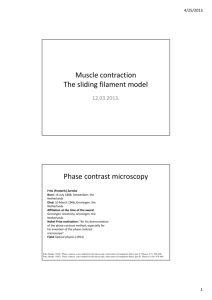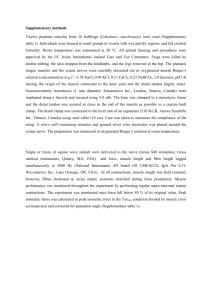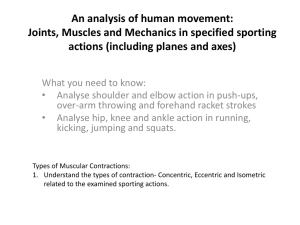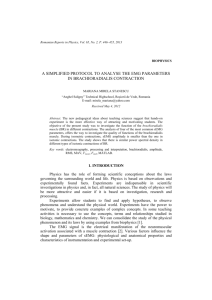Computer Lab Worksheet WILSON MUSCLE CONTRACTION
advertisement
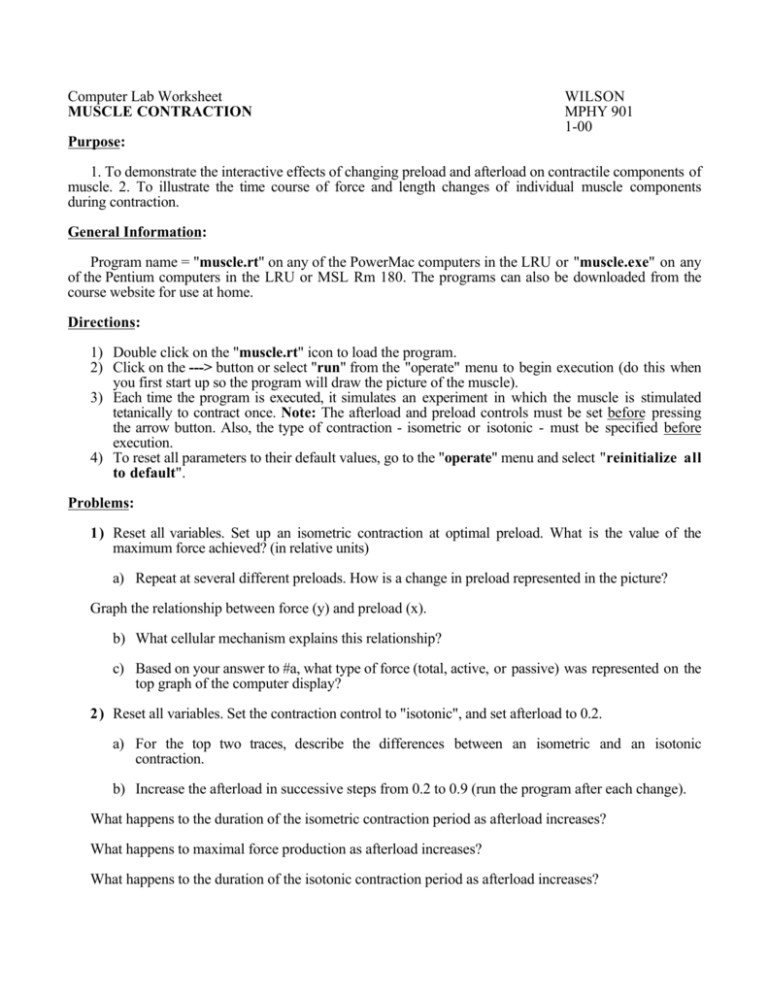
Computer Lab Worksheet MUSCLE CONTRACTION WILSON MPHY 901 1-00 Purpose: 1. To demonstrate the interactive effects of changing preload and afterload on contractile components of muscle. 2. To illustrate the time course of force and length changes of individual muscle components during contraction. General Information: Program name = "muscle.rt" on any of the PowerMac computers in the LRU or "muscle.exe" on any of the Pentium computers in the LRU or MSL Rm 180. The programs can also be downloaded from the course website for use at home. Directions: 1) Double click on the "muscle.rt" icon to load the program. 2) Click on the ---> button or select "run" from the "operate" menu to begin execution (do this when you first start up so the program will draw the picture of the muscle). 3) Each time the program is executed, it simulates an experiment in which the muscle is stimulated tetanically to contract once. Note: The afterload and preload controls must be set before pressing the arrow button. Also, the type of contraction - isometric or isotonic - must be specified before execution. 4) To reset all parameters to their default values, go to the "operate" menu and select "reinitialize all to default". Problems: 1) Reset all variables. Set up an isometric contraction at optimal preload. What is the value of the maximum force achieved? (in relative units) a) Repeat at several different preloads. How is a change in preload represented in the picture? Graph the relationship between force (y) and preload (x). b) What cellular mechanism explains this relationship? c) Based on your answer to #a, what type of force (total, active, or passive) was represented on the top graph of the computer display? 2) Reset all variables. Set the contraction control to "isotonic", and set afterload to 0.2. a) For the top two traces, describe the differences between an isometric and an isotonic contraction. b) Increase the afterload in successive steps from 0.2 to 0.9 (run the program after each change). What happens to the duration of the isometric contraction period as afterload increases? What happens to maximal force production as afterload increases? What happens to the duration of the isotonic contraction period as afterload increases? c) At the beginning of the isotonic phase of contraction (the green vertical line), what does the change in total muscle length per unit time represent? How does this "parameter" change with increasing afterload? Is the change linear or non-linear? (Try to make a semi-quantitative graph) d) How would this graph change if preload were set to a different value? 3) Reset and specify "isometric contractions". Now keep replaying the contraction as you observe the internal components of the muscle (Look either at the picture or at the graphs). a) How does the length of the series-elastic-element (SEC) change with time during an isometric contraction? b) How is this affected by alterations in preload? Why? c) How do the lengths of the parallel-elastic-(PEC) and contractile (CC) elements change with time during an isometric contraction? Why? d) Why doesn't total muscle length change during an isometric contraction? 4) Reset, and specify an isotonic contraction at afterload = 0.5. a) What internal components of the muscle are changing length before muscle shortening (external shortening) occurs? b) What internal components of the muscle are changing length after muscle shortening (external shortening) begins? c) Why aren't SEC, CC and total muscle length changes synchronized? d) According to these graphs, when is the isotonic phase of contraction complete?

